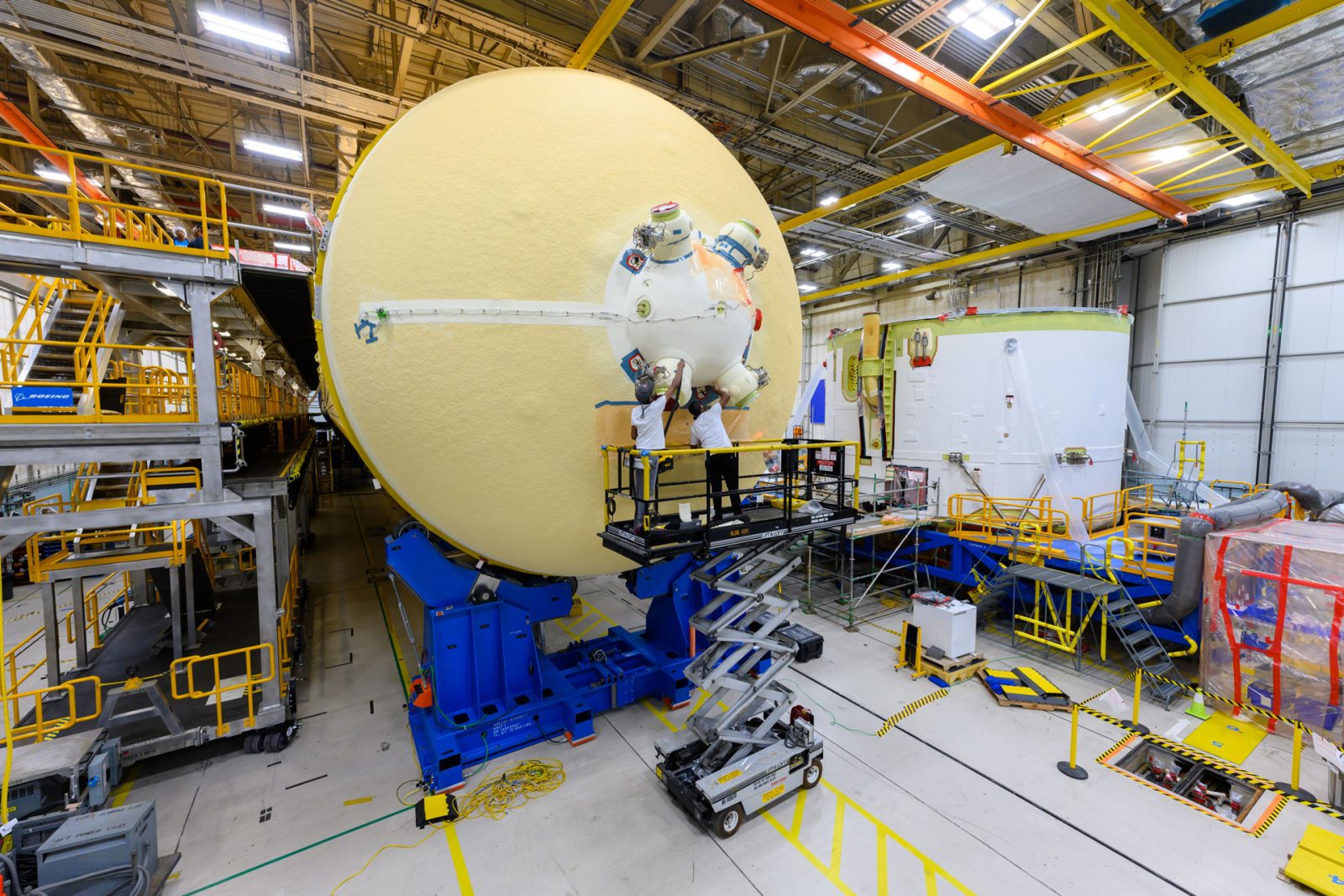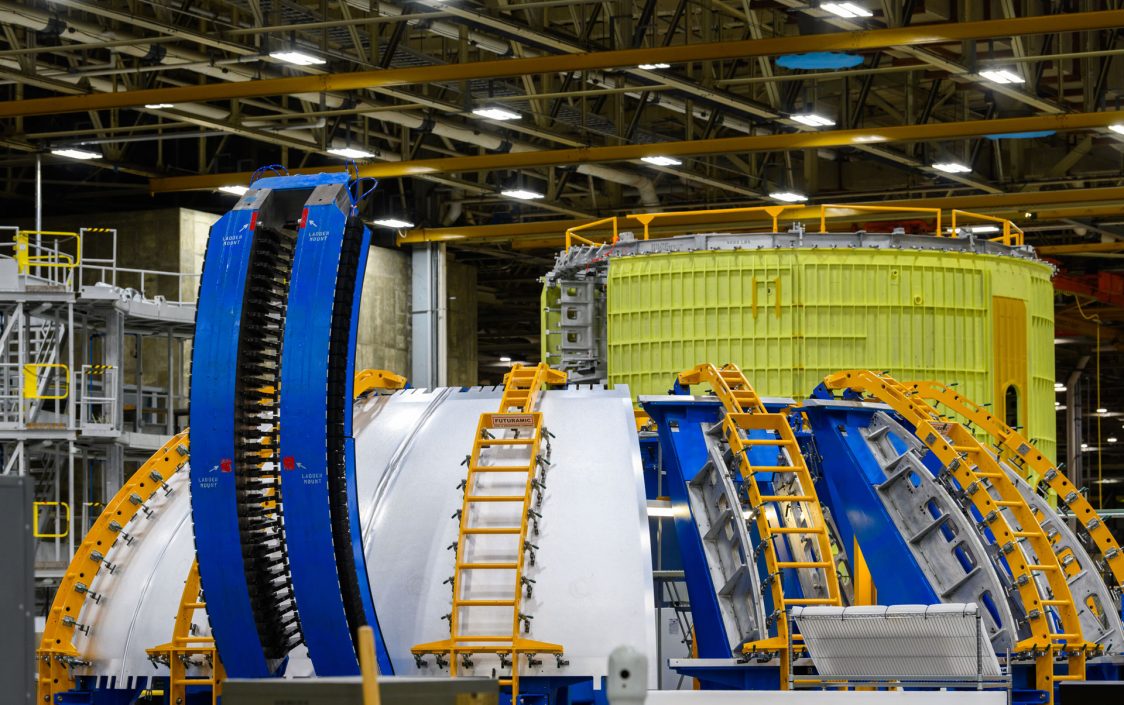NASA’s SLS rocket hardware for Artemis II, III, and IV are already in various phases of production, assembly, and testing. The Artemis II core stage is in final assembly as teams are preparing to join it to the engine section and install the four RS-25 engines ahead of delivery to Kennedy Space Center.
Progress Underway on Moon Rockets for NASA’s Crewed Artemis Missions
Original Article From NASA.gov
Article appeared February 6, 2023
By: Alyssa Lee
NASA and its partners across the country are continuing to make progress on the crewed Artemis missions with hardware for NASA’s Space Launch System (SLS) rockets for Artemis II, III, and IV already in various phases of production, assembly, and testing.
SLS proved to be the world’s most powerful rocket, when its two solid rocket boosters and four RS-25 engines produced more than 8.8 million pounds of thrust at liftoff to send NASA’s Orion spacecraft beyond the Moon and back on Artemis I. Data from the first flight of SLS is helping engineers build confidence in the rocket’s systems to safely fly crew on future lunar missions.
“The power that NASA’s Space Launch System rocket provides will enable astronauts to explore further in our solar system than ever before and discover more about the Moon, Mars, and beyond,” said John Honeycutt, SLS program manager at NASA’s Marshall Space Flight Center in Huntsville, Alabama. “NASA is on the brink of new age of deep space discovery, and the SLS team and our partners are more focused than ever to manufacture and produce SLS rockets for Artemis missions that will put boots on the Moon for decades to come.”
Like Artemis I, the SLS rockets that will power the Artemis II and III missions to the Moon will use the Block 1 configuration with the interim cryogenic propulsion stage (ICPS). Beginning with Artemis IV, the SLS rocket will evolve into a more powerful configuration called the Block 1B, which replaces the ICPS with the more dynamic Exploration Upper Stage (EUS) for in-space propulsion to send crew and large cargos to the Moon.
NASA and Boeing, lead contractor for the SLS core stage, are manufacturing the 212-foot-tall stages for Artemis II, III, and IV at NASA’s Michoud Assembly Facility in New Orleans. The Artemis II core stage is in final assembly. Once the engine section is joined to the other four elements for the Artemis II core stage at Michoud, teams will uncrate and install each of the four RS-25 engines to the stage and then ready it for delivery to NASA’s Kennedy Space Center in Florida. Technicians are simultaneously preparing for core stage assembly and outfitting activities for the Artemis III Moon rocket – the engine section for Artemis II was delivered to Kennedy in December 2022. In tandem, teams at Michoud are continuing all core stage manufacturing and production activities for the five major elements of the core stage for Artemis III and IV.
“Michoud is humming with activity as teams work on multiple SLS core stages for three different Artemis missions as well as the initial welds for the Exploration Upper Stage (EUS) for the fourth SLS flight,” said Lonnie Dutreix, director of NASA’s Michoud Assembly Facility. “Everywhere you look, you see rocket hardware that will power missions to send the first woman and the first person of color to the Moon.”

The engine section, right, is the last major structure that makes up the core stage of NASA’s Space Launch System rocket that will help power the Artemis II mission. Crews at NASA’s Michoud Assembly Facility in New Orleans will soon move the engine section to another part of the facility, rotate it to a horizontal position, and then integrate it to the rest of the rocket stage to join all five elements together.
To read the full article please visit: NASA.gov
Photo Credits: NASA/Eric Bordelon

